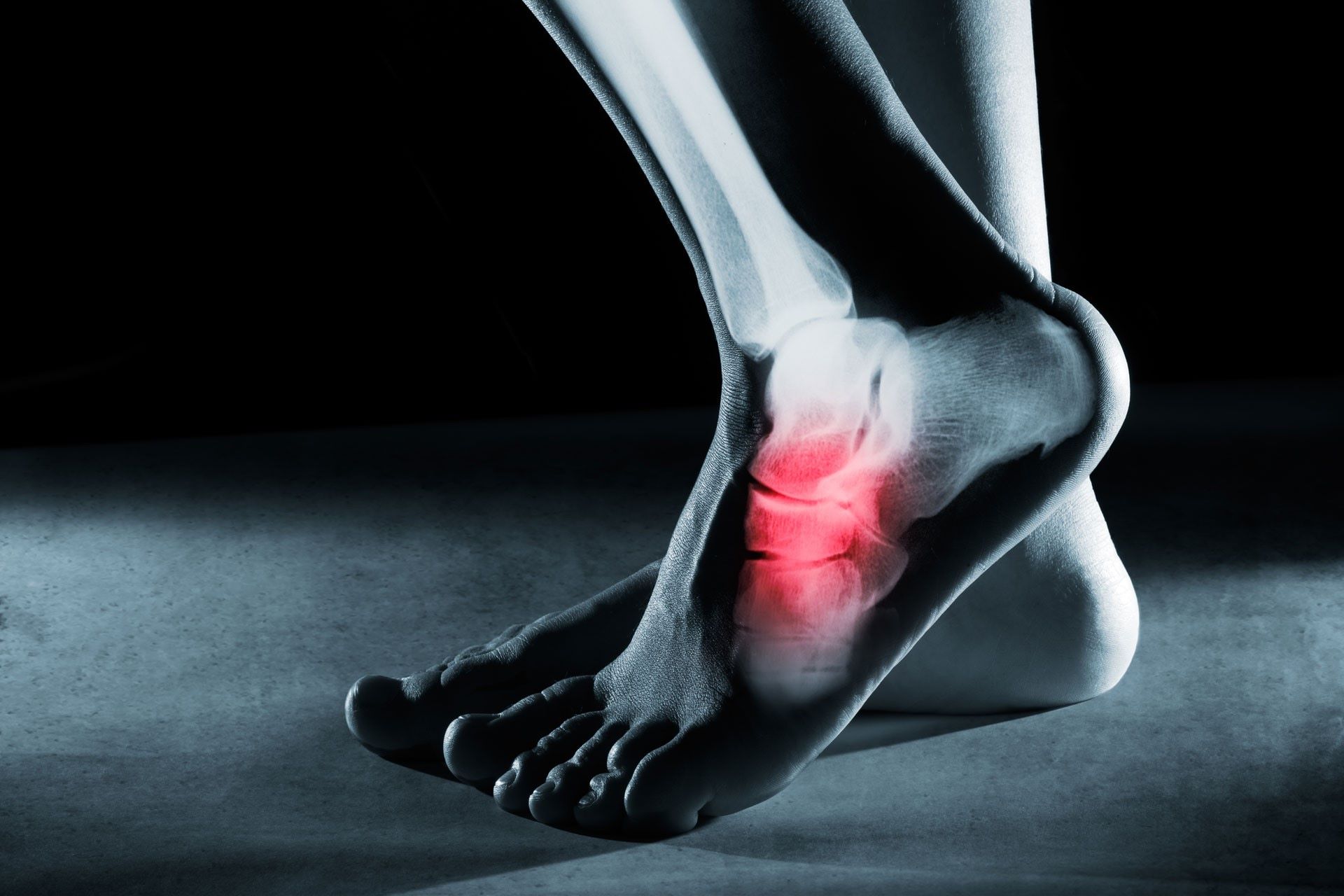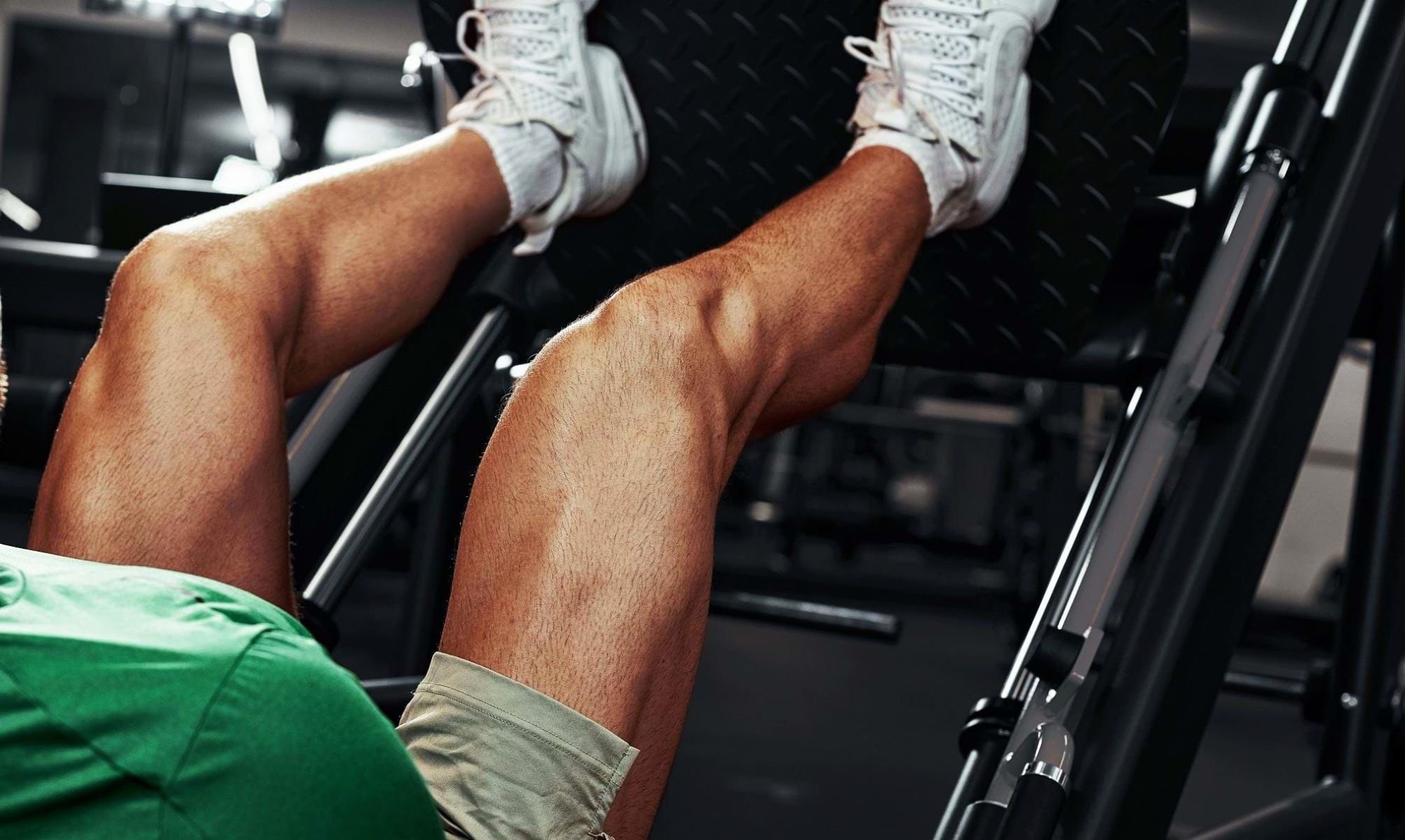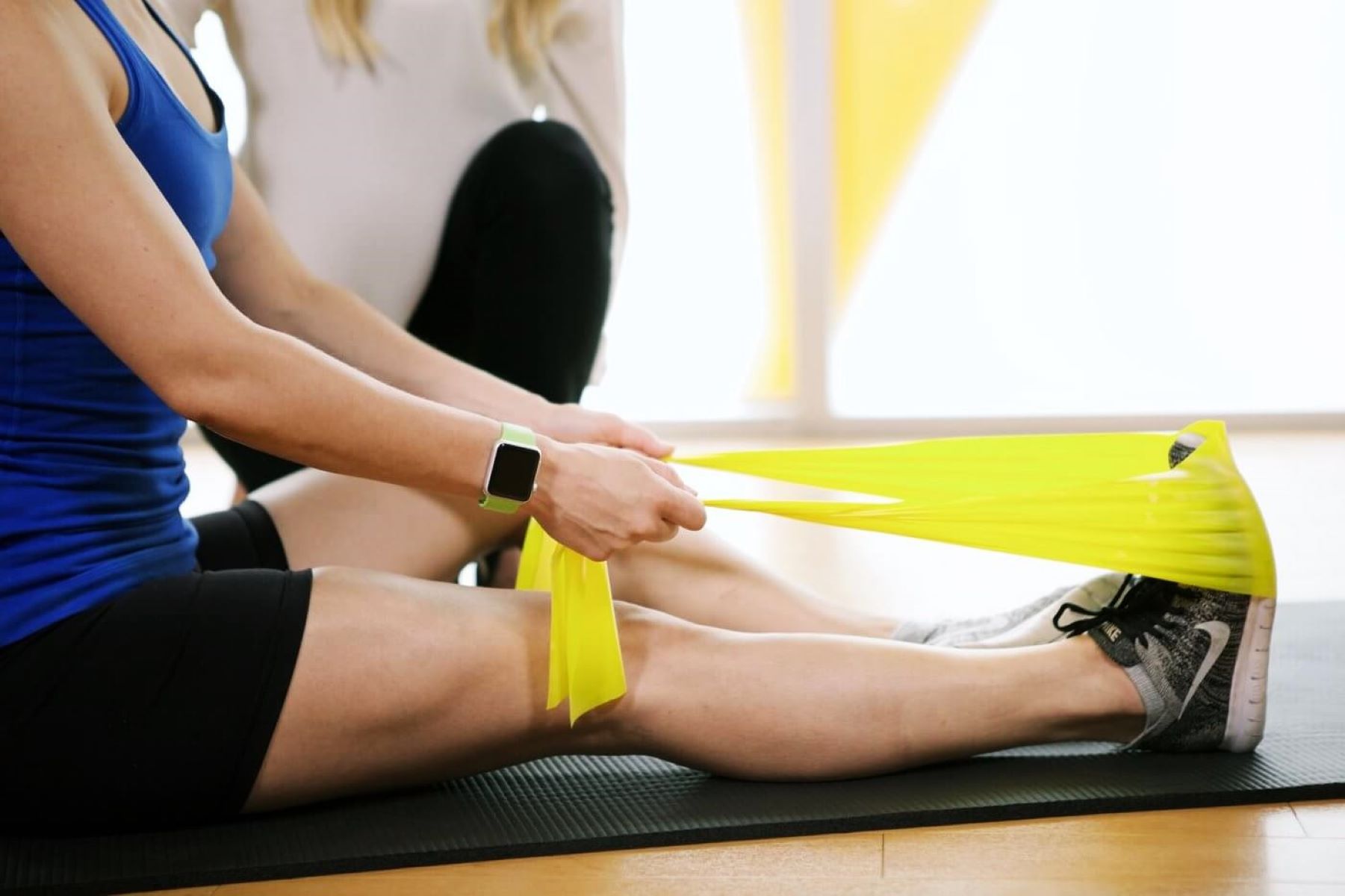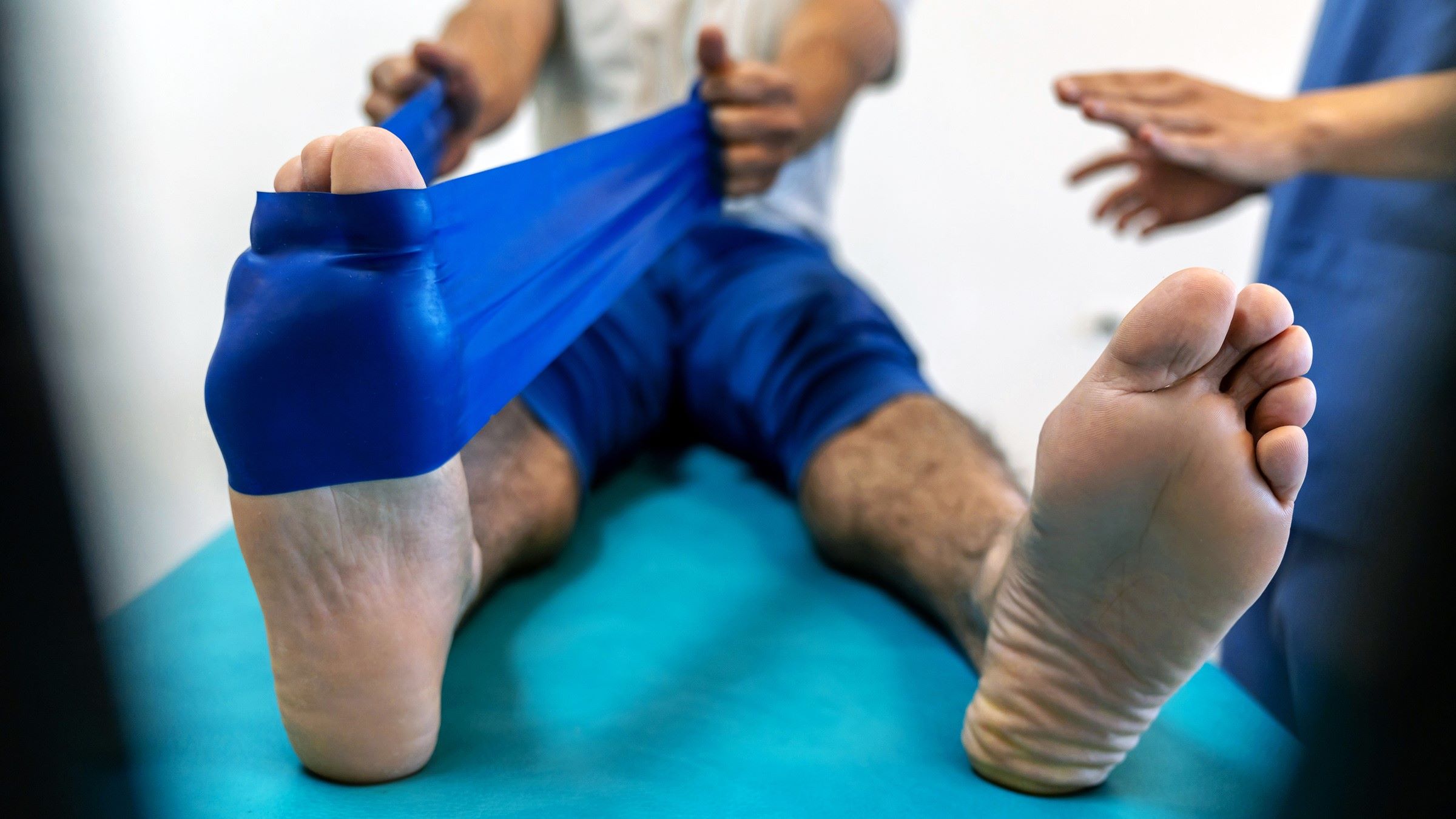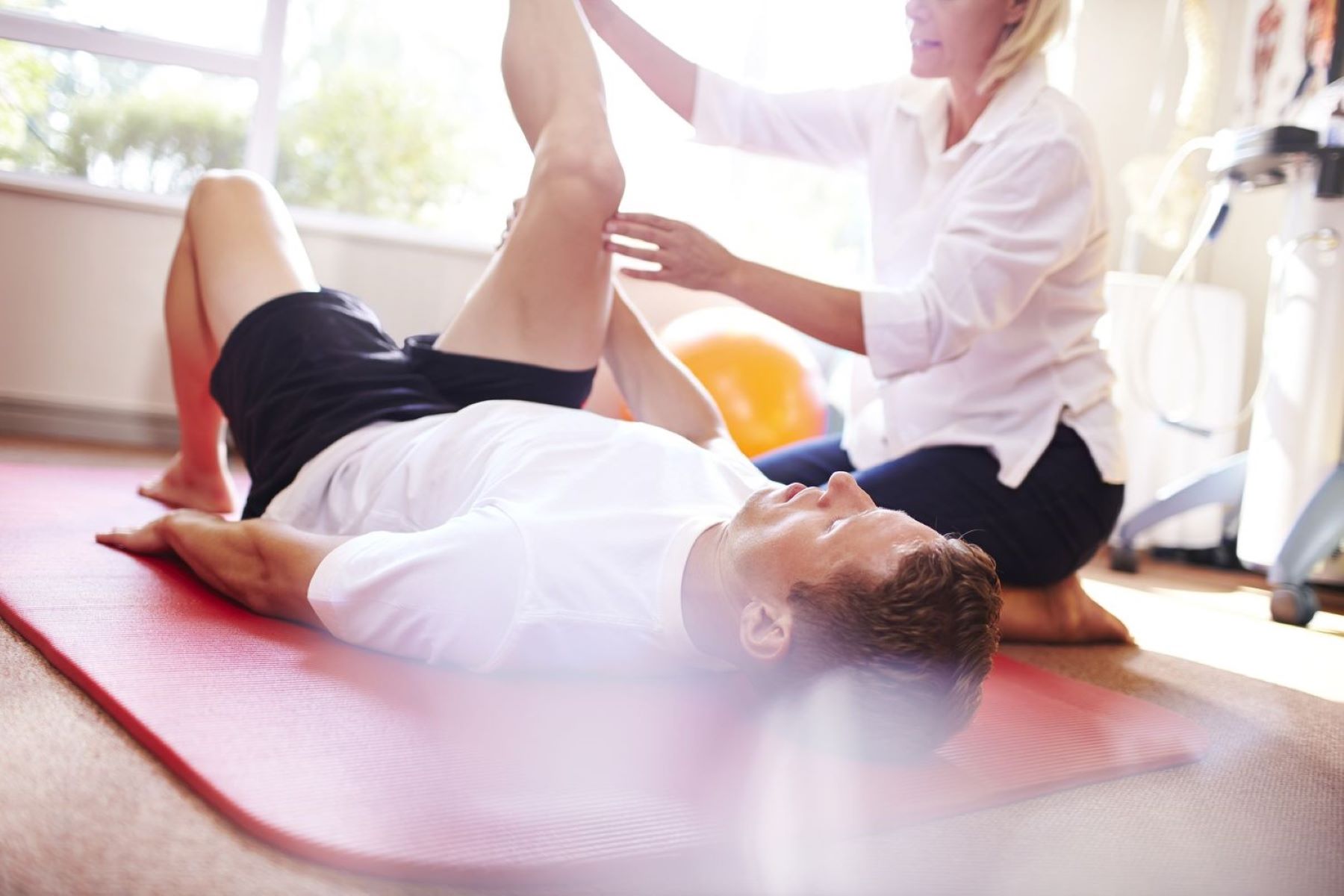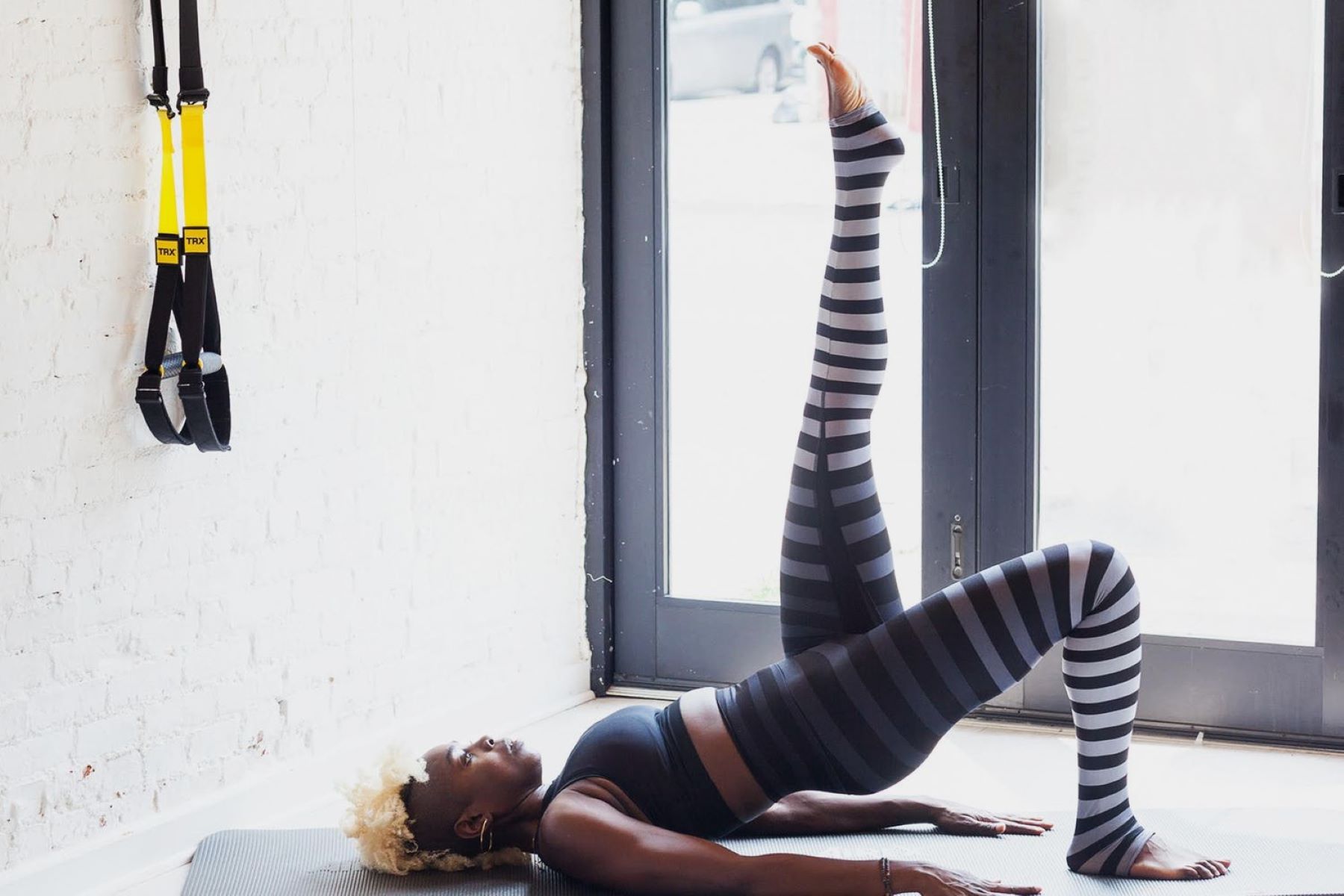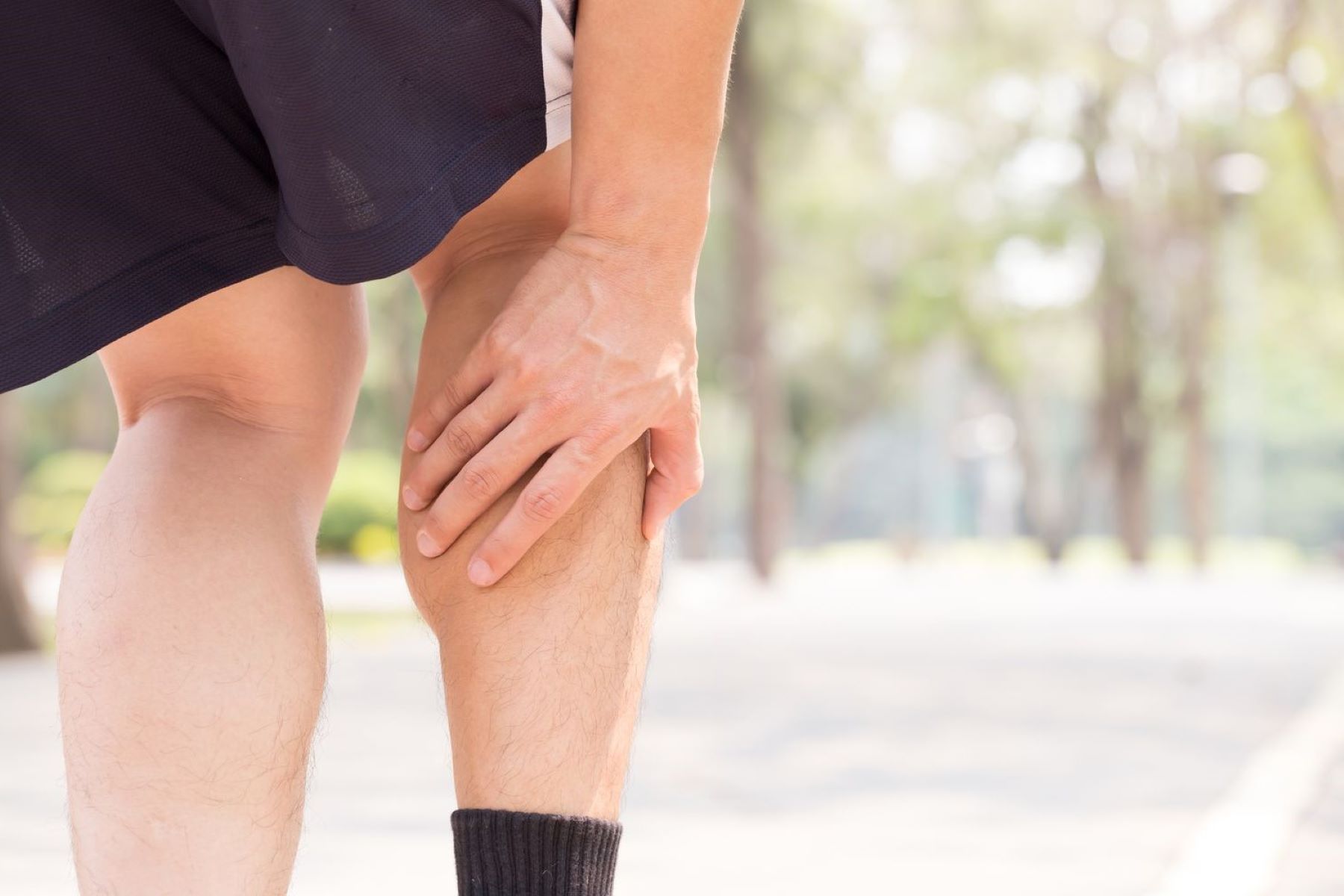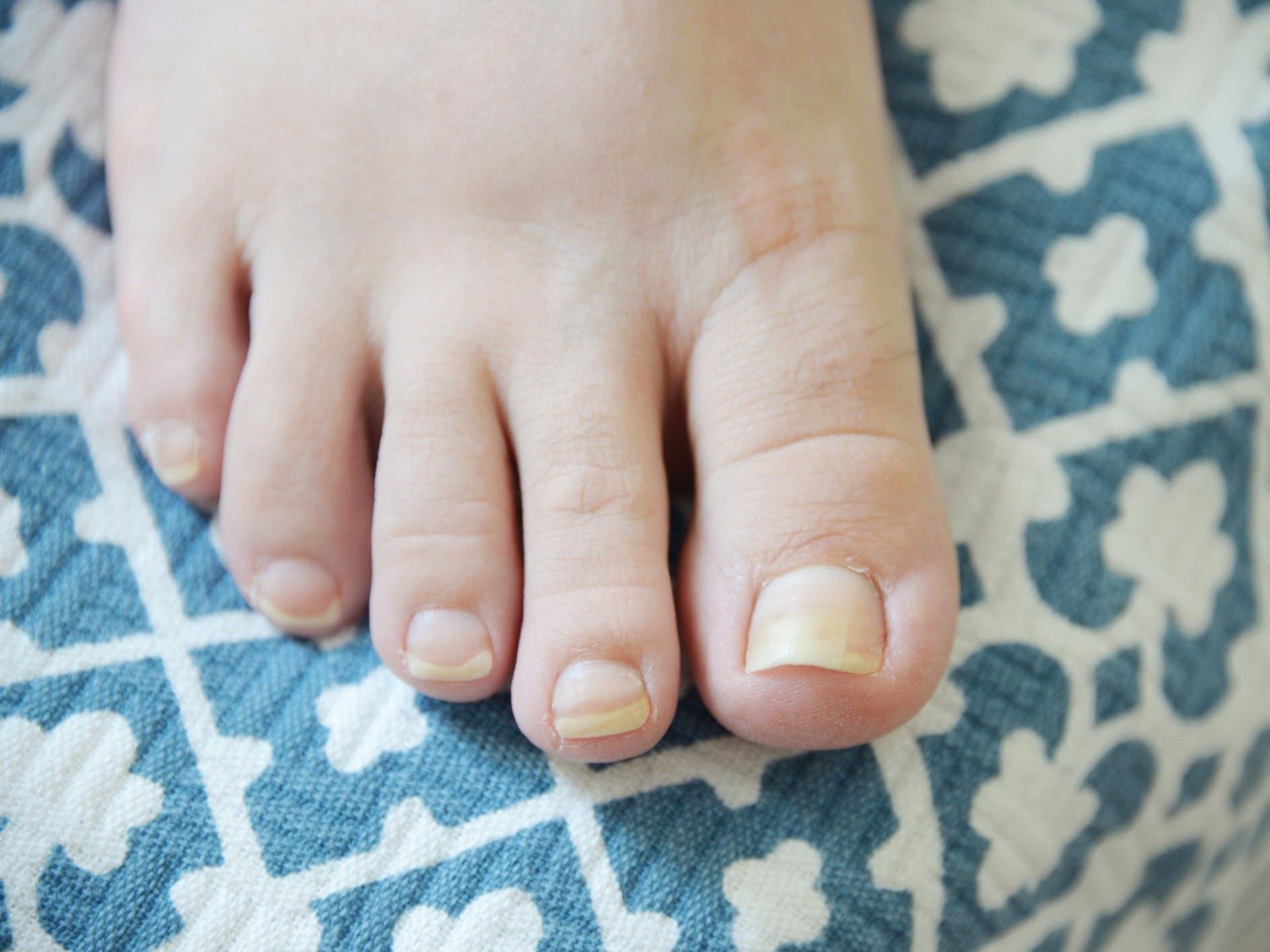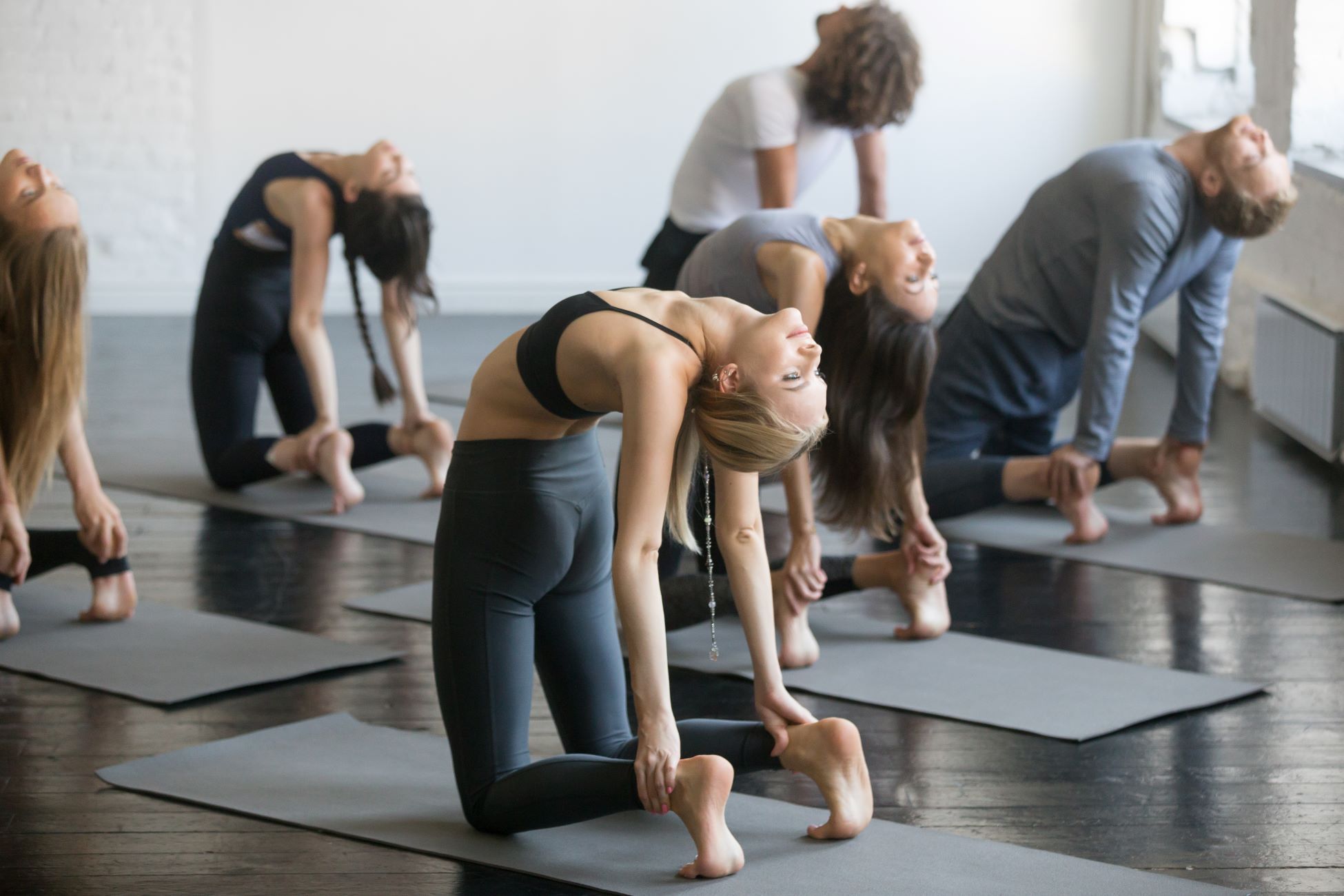Home>Training & Techniques>4 Foot-Strengthening Exercises To Try At Home
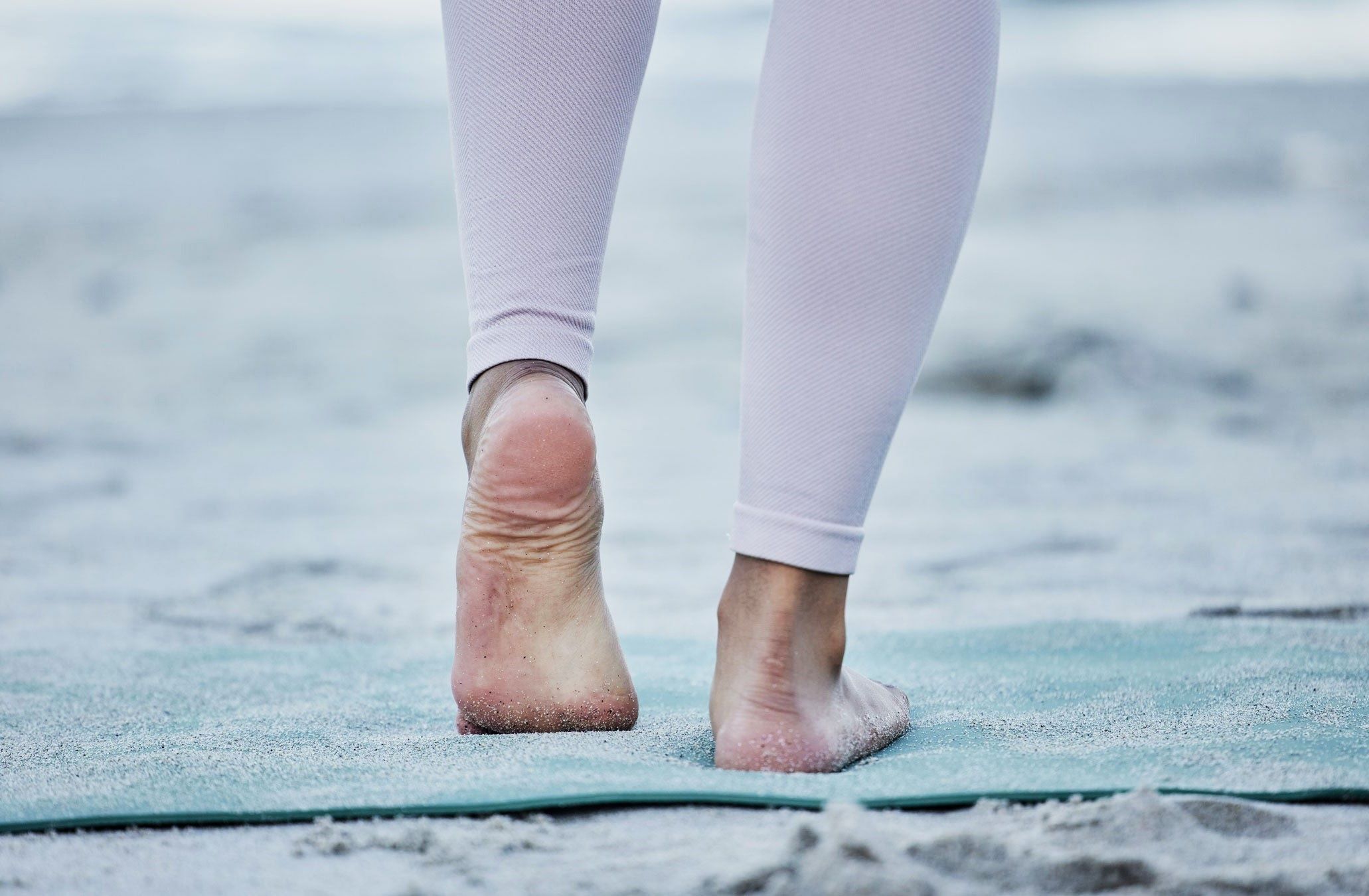

Training & Techniques
4 Foot-Strengthening Exercises To Try At Home
Published: March 2, 2024
Improve your foot strength with these effective at-home exercises. Discover training and techniques to enhance your foot health and performance. Start your journey to stronger feet today!
(Many of the links in this article redirect to a specific reviewed product. Your purchase of these products through affiliate links helps to generate commission for Therunningadvisor.com, at no extra cost. Learn more)
Table of Contents
Introduction
When it comes to fitness, we often focus on strengthening our major muscle groups, such as the arms, legs, and core. However, one area that is frequently overlooked is the feet. Our feet play a crucial role in supporting our body weight and facilitating movement, making them essential for overall physical well-being. In this article, we will explore the importance of foot strengthening and introduce four effective exercises that can be easily performed at home.
Our feet are the foundation of our body's structural integrity, providing stability and balance during various activities, including walking, running, and standing. Despite their significance, many individuals neglect to prioritize foot strength and flexibility in their fitness routines. This oversight can lead to issues such as foot pain, decreased mobility, and an increased risk of injury.
By incorporating foot-strengthening exercises into your regular workout regimen, you can enhance the stability and functionality of your feet, thereby improving your overall physical performance. These exercises target the intrinsic muscles of the feet, which are responsible for maintaining proper arch support and absorbing impact during weight-bearing activities.
In the following sections, we will delve into the benefits of strengthening your feet and provide a step-by-step guide to four exercises that can help you develop stronger, more resilient feet. Whether you are an athlete looking to optimize your performance, someone seeking relief from foot discomfort, or simply interested in enhancing your overall fitness, these exercises offer a valuable opportunity to prioritize the often-neglected aspect of foot health.
By dedicating time and effort to strengthening your feet, you can lay a solid foundation for improved mobility, reduced discomfort, and enhanced athletic prowess. Let's embark on this journey to discover the transformative impact of foot-focused exercises and unlock the full potential of our often-underappreciated feet.
Benefits of Strengthening Your Feet
Strengthening the feet offers a myriad of advantages that extend beyond the realm of foot health. By prioritizing the development of foot strength and flexibility, individuals can experience a wide range of physical and functional benefits. Here are some compelling reasons to incorporate foot-strengthening exercises into your fitness routine:
-
Enhanced Stability and Balance: Strong and resilient feet form the foundation for improved stability and balance. The intrinsic muscles of the feet play a pivotal role in maintaining proper alignment and distributing body weight effectively. By strengthening these muscles, individuals can experience enhanced stability during various activities, reducing the risk of falls and injuries.
-
Improved Athletic Performance: Athletes across different disciplines can benefit significantly from foot-strengthening exercises. Stronger feet contribute to better propulsion, agility, and overall athletic performance. Whether you are a runner, dancer, or sports enthusiast, developing robust foot muscles can elevate your capabilities and endurance, enabling you to excel in your chosen activities.
-
Prevention of Foot Conditions: Strengthening the feet can help prevent and alleviate common foot conditions, such as plantar fasciitis, arch pain, and tendonitis. By fortifying the muscles, tendons, and ligaments in the feet, individuals can reduce the likelihood of experiencing discomfort and inflammation, thereby promoting long-term foot health.
-
Alleviation of Discomfort: Many individuals experience foot discomfort due to prolonged standing, ill-fitting footwear, or inadequate support. Strengthening exercises can alleviate such discomfort by enhancing the resilience and shock-absorbing capacity of the feet. This can be particularly beneficial for individuals who spend extended periods on their feet, such as healthcare professionals, teachers, and retail workers.
-
Enhanced Proprioception: Proprioception, or the body's awareness of its position in space, is closely linked to foot health. Strengthening the feet can improve proprioceptive feedback, leading to better coordination and movement patterns. This heightened awareness can contribute to injury prevention and improved overall body mechanics.
-
Support for the Kinetic Chain: The feet are integral components of the kinetic chain, which encompasses the interconnected segments of the body involved in movement. By strengthening the feet, individuals can positively influence the entire kinetic chain, promoting optimal alignment, posture, and functional movement patterns throughout the body.
Incorporating foot-strengthening exercises into your fitness regimen can yield profound and multifaceted benefits, transcending the confines of foot health alone. Whether you are an athlete striving for peak performance, an individual seeking relief from foot discomfort, or someone committed to enhancing overall physical well-being, prioritizing foot strength can be a transformative endeavor with far-reaching positive implications.
Exercise 1: Toe Tapping
Toe tapping is a simple yet effective exercise that targets the intrinsic muscles of the feet, promoting strength, flexibility, and improved dexterity. This exercise can be performed virtually anywhere, making it an accessible and convenient option for individuals looking to enhance their foot health. Whether you are a seasoned athlete, a fitness enthusiast, or someone seeking relief from foot discomfort, incorporating toe tapping into your routine can yield significant benefits.
To perform toe tapping, begin by sitting comfortably in a chair with your feet flat on the floor. Keeping your heels grounded, lift the toes of both feet off the ground, allowing only the balls of the feet to make contact with the floor. Once in this position, rapidly tap your toes against the ground for a designated duration, aiming for a steady and controlled rhythm.
As you engage in toe tapping, focus on maintaining a consistent pace and distributing the tapping motion evenly across both feet. This exercise effectively targets the muscles in the arches of the feet, promoting strength and resilience in this crucial area. Additionally, toe tapping enhances the flexibility and agility of the toes, contributing to improved mobility and balance.
Incorporating toe tapping into your daily routine can yield a range of benefits, including enhanced foot stability, improved toe dexterity, and increased blood circulation to the feet. This exercise is particularly valuable for individuals who spend prolonged periods in sedentary positions, such as office workers or individuals with limited mobility. By integrating toe tapping into your regular activities, you can proactively strengthen your feet and mitigate the impact of prolonged sitting on foot health.
Furthermore, toe tapping serves as an excellent warm-up exercise before engaging in more strenuous physical activities. By priming the intrinsic foot muscles through toe tapping, individuals can optimize their readiness for dynamic movements, such as running, jumping, or dancing. This exercise can help activate the muscles and connective tissues in the feet, preparing them for the demands of various physical pursuits.
In summary, toe tapping is a versatile and accessible exercise that offers a multitude of benefits for foot health and overall physical well-being. By incorporating this simple yet impactful exercise into your daily routine, you can cultivate stronger, more agile feet, enhancing your stability, mobility, and resilience. Whether you are seeking to prevent foot discomfort, improve athletic performance, or simply prioritize your foot health, toe tapping presents a valuable opportunity to invest in the strength and functionality of your feet.
Exercise 2: Marble Pickup
Marble pickup is a captivating and beneficial exercise that targets the dexterity and strength of the toes and the arches of the feet. This engaging activity not only promotes foot health but also enhances focus and coordination. The simplicity and effectiveness of marble pickup make it an ideal addition to any foot-strengthening regimen, offering a delightful way to cultivate resilient and agile feet.
To embark on the marble pickup exercise, you will need a small bowl or container filled with marbles and a comfortable seating position. Sit on a chair with your feet resting flat on the floor, ensuring that your back is adequately supported. Place the bowl of marbles in front of you, within easy reach of your feet. With the marbles scattered on the floor around the bowl, you are ready to commence this engaging exercise.
Using one foot at a time, begin picking up the marbles with your toes and placing them into the bowl. This action requires precision and control, engaging the intrinsic muscles of the feet and promoting toe dexterity. As you maneuver your toes to grasp the marbles, you will feel the muscles in the arches of your feet activating, contributing to improved strength and flexibility.
Marble pickup serves as a delightful and effective way to enhance the coordination and agility of the toes, fostering a deeper connection between the mind and the feet. This exercise not only strengthens the muscles but also sharpens the focus and concentration, making it a valuable practice for individuals of all ages. The tactile sensation of picking up the marbles with the toes adds a sensory dimension to the exercise, heightening the overall experience and promoting mindful movement.
In addition to its physical benefits, marble pickup offers a playful and interactive approach to foot strengthening, making it particularly appealing for children and individuals seeking a lighthearted yet impactful exercise. The incorporation of marbles introduces an element of fun and creativity, transforming the exercise into an enjoyable game that can be shared with family members or friends.
By integrating marble pickup into your regular routine, you can reap a multitude of benefits, including improved toe dexterity, enhanced arch strength, and heightened sensory awareness in the feet. This exercise is especially valuable for individuals seeking to prevent or alleviate discomfort associated with conditions such as plantar fasciitis or toe deformities. Moreover, the mental engagement and tactile stimulation offered by marble pickup contribute to a holistic approach to foot health, nurturing both the physical and cognitive aspects of well-being.
In summary, marble pickup presents a delightful and effective means of strengthening the feet while promoting focus, coordination, and sensory awareness. By embracing this engaging exercise, individuals can embark on a journey to cultivate resilient, agile, and mindful feet, laying the groundwork for enhanced stability, mobility, and overall foot health.
Exercise 3: Resistance Band Flexion
Resistance band flexion is a dynamic and effective exercise designed to target the intrinsic muscles of the feet while promoting strength, flexibility, and mobility. This exercise harnesses the resistance provided by a specialized elastic band to engage the muscles in the arches of the feet, fostering resilience and enhancing overall foot health. By incorporating resistance band flexion into your regular fitness routine, you can embark on a transformative journey to fortify your feet and optimize their functionality.
To initiate the resistance band flexion exercise, you will need a high-quality resistance band specifically designed for foot exercises. Begin by sitting in a comfortable position with your legs extended in front of you. Secure one end of the resistance band around a sturdy anchor, such as a table leg or heavy furniture, ensuring that it is firmly anchored to provide stable resistance. Next, loop the other end of the band around the ball of one foot, holding the opposite end securely with your hands.
With the resistance band securely in place, gently flex your foot backward, against the resistance of the band, while keeping your heel grounded. This action engages the muscles in the arch of the foot, promoting strength and flexibility. As you perform the flexion movement, focus on maintaining a smooth and controlled motion, allowing the resistance band to provide targeted tension to the foot muscles. Aim to achieve a comfortable range of motion while experiencing a gentle yet invigorating stretch in the arch of the foot.
Resistance band flexion offers a versatile and customizable approach to foot strengthening, allowing individuals to adjust the intensity of the exercise based on their unique needs and fitness levels. By utilizing resistance bands with varying degrees of tension, individuals can progressively challenge and strengthen the muscles in their feet, fostering continuous improvement and adaptation. This adaptability makes resistance band flexion suitable for individuals at different stages of their fitness journey, from beginners to seasoned athletes seeking to optimize their foot health.
In addition to promoting foot strength, resistance band flexion contributes to improved flexibility and range of motion in the feet, which are essential for supporting various physical activities and movements. The controlled resistance provided by the band facilitates targeted muscle engagement, helping individuals develop greater control and stability in their foot mechanics. This can be particularly beneficial for individuals recovering from foot injuries or seeking to prevent future issues related to foot discomfort or instability.
Furthermore, resistance band flexion serves as a valuable complement to comprehensive foot-strengthening regimens, offering a focused approach to fortifying the often-neglected muscles in the feet. By integrating this exercise into your regular routine, you can cultivate resilient and agile feet, enhancing your overall stability, mobility, and athletic performance. Whether you are an athlete striving to optimize your foot mechanics or an individual seeking relief from foot discomfort, resistance band flexion presents a valuable opportunity to invest in the strength and functionality of your feet.
In summary, resistance band flexion stands as a dynamic and adaptable exercise that targets the intrinsic muscles of the feet, promoting strength, flexibility, and mobility. By embracing this exercise, individuals can embark on a transformative journey to fortify their feet, fostering resilience and optimizing their overall foot health. With its customizable nature and targeted muscle engagement, resistance band flexion offers a valuable avenue for individuals to prioritize their foot strength and lay the foundation for enhanced stability and mobility.
Exercise 4: Calf Raises
Calf raises are a fundamental yet highly effective exercise that targets the calf muscles while simultaneously engaging the muscles in the feet and ankles. This versatile exercise not only promotes strength and endurance in the calves but also contributes to improved stability and balance, making it an invaluable addition to any comprehensive foot-strengthening regimen. Whether you are an athlete aiming to enhance lower leg strength or an individual seeking to fortify the muscles supporting your feet, incorporating calf raises into your routine can yield significant benefits.
To initiate calf raises, begin by standing upright with your feet hip-width apart and your weight evenly distributed. Ensure that your posture is aligned, with your shoulders relaxed and your abdominal muscles lightly engaged. If needed, you can use a sturdy surface, such as a wall or a chair, for support and balance.
With your feet firmly planted on the ground, slowly raise your heels off the floor, lifting your body upward using the strength of your calf muscles. As you ascend, focus on maintaining a controlled and steady motion, aiming to achieve a full range of motion while keeping your ankles stable. Once you reach the peak of the movement, briefly hold the raised position to maximize the engagement of the calf muscles.
After the brief pause at the top, gently lower your heels back to the starting position, allowing your calves to stretch as you return to the initial stance. Throughout the exercise, concentrate on maintaining proper alignment and avoiding any excessive swaying or instability. Aim to perform calf raises in a smooth and deliberate manner, emphasizing the engagement of the calf muscles and the supportive muscles in the feet and ankles.
Calf raises offer a comprehensive approach to strengthening the lower leg muscles, including the gastrocnemius and soleus muscles, which play a crucial role in supporting the feet and facilitating various movements. By regularly incorporating calf raises into your fitness routine, you can enhance the endurance and resilience of these muscles, contributing to improved stability and functionality in the lower legs and feet.
In addition to their physical benefits, calf raises promote enhanced proprioception and balance, as they require coordinated muscle activation and control. This exercise fosters a deeper connection between the lower leg muscles and the supportive structures in the feet, leading to improved overall stability and coordination during weight-bearing activities.
Moreover, calf raises serve as a versatile exercise that can be adapted to accommodate individuals at different fitness levels. Whether you are a beginner seeking to build foundational lower leg strength or an experienced athlete aiming to optimize calf muscle endurance, calf raises can be tailored to suit your specific needs and goals. By gradually increasing the number of repetitions and exploring variations of the exercise, such as single-leg calf raises, individuals can progressively challenge and strengthen their lower leg muscles, fostering continuous improvement and adaptation.
In summary, calf raises stand as a foundational and impactful exercise that targets the calf muscles while promoting stability, balance, and lower leg strength. By integrating this exercise into your regular routine, you can cultivate resilient and robust lower leg muscles, enhancing your overall stability, mobility, and athletic performance. Whether you are seeking to fortify the muscles supporting your feet or aiming to optimize lower leg functionality, calf raises offer a valuable opportunity to invest in the strength and endurance of your lower legs and feet.
Conclusion
In conclusion, prioritizing the strength and resilience of our feet through targeted exercises offers a transformative pathway to enhanced physical well-being and functional performance. By recognizing the pivotal role of the feet as the foundation of our body's structural integrity, we can embark on a journey to cultivate stronger, more agile feet, thereby reaping a multitude of benefits that extend beyond foot health alone.
The exercises outlined in this article, including toe tapping, marble pickup, resistance band flexion, and calf raises, present accessible and effective means of fortifying the intrinsic muscles of the feet while promoting stability, balance, and mobility. These exercises cater to individuals of diverse fitness levels and can be seamlessly integrated into daily routines, offering a valuable opportunity to prioritize foot health and overall physical well-being.
Through the consistent practice of foot-strengthening exercises, individuals can experience a range of benefits, including enhanced stability and balance, improved athletic performance, prevention of foot conditions, alleviation of discomfort, enhanced proprioception, and support for the kinetic chain. These exercises not only target the muscles in the feet but also contribute to improved coordination, focus, and sensory awareness, fostering a holistic approach to foot health.
Furthermore, the incorporation of foot-strengthening exercises into regular fitness regimens can serve as a proactive measure to prevent foot discomfort, mitigate the impact of prolonged sitting or standing, and optimize the functionality of the feet for various physical activities. Whether one's goal is to excel in athletic pursuits, alleviate foot discomfort, or simply prioritize overall physical well-being, the investment in foot strength through targeted exercises is a valuable and rewarding endeavor.
By embracing the principles of foot health and recognizing the significance of foot strength in our daily lives, individuals can lay a solid foundation for improved mobility, reduced discomfort, and enhanced athletic prowess. The journey to cultivate resilient and agile feet through targeted exercises is a testament to our commitment to holistic well-being, encompassing physical, mental, and emotional dimensions.
In essence, the exercises presented in this article offer a gateway to unlock the full potential of our often-underappreciated feet, empowering us to move with confidence, stability, and grace. As we embark on this journey to prioritize foot health and strength, let us celebrate the remarkable capabilities of our feet and embrace the transformative impact of nurturing their resilience and functionality.

